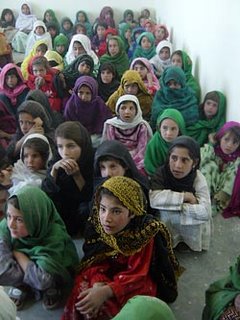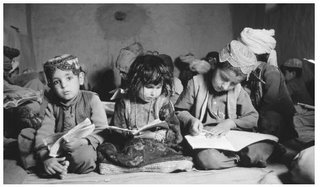Tuesday, August 29
Near Kandahar: Suicide car bomb attack on a Canadian-Afghan military convoy did not cause any Canadian casualties, but killed the bomber and a civilian nearby and wounded an Afghan soldier. The attack occurred on the road linking Kandahar with the Kandahar Airport.
Gereshk District, Helmand Province: Roadside bomb attack on a police patrol here killed killed two policemen. Gereshk has been hostile for years now.
East Kabul: Roadside bomb attack on a NATO vehicle in East Kabul missed the target and no one was hurt. Things are getting pretty bad when the guerrillas are setting off roadside bombs right inside Kabul proper.
****
Cahar Cineh District, Uruzgan Province: 60 Taliban attacked a Coalition force with RPG's and machine guns here, sparking a savage battle. 18 Taliban were killed and there were no Coalition casualties. There is no such district as the Cahar Cineh District in Uruzgan.
There is a town called Cineh in the very hostile Deh Rawood District, which is about 7 miles west of the very hostile district capital of Deh Rawood and about 6 1/2 miles east of the Helmand border. For unknown reasons, most of the Taliban activity in Uruzgan is in the south.
*****
****
Bamiyan Province: Two New Zealand soldiers were wounded in a vehicle accident here when a part of the road they were on gave way, causing their vehicle to roll down a 60-foot slope.
Bamiyan is populated by a persecuted, Shia Asian ethnic group called the Hazara. The Hazara are pro-Coalition and are not involved in any armed attacks at all. The Taliban killed many Hazara and engaged in a vicious campaign against them that had genocidal overtones.
Much of Bamiyan, except the Bamiyan Valley, is is a high-altitude, fairly barren province that is one of the less desirable places to live in Afghanistan, mostly because it is inhospitable rather than unproductive. It is cold and dry, with very long, very cold winters and short, hot summers. Most of the region only gets about 5 inches of rain a year. The amount of snowfall is not known, but the region reportedly gets heavy snowstorms.
The Hazara have been driven here from more productive parts of the country, where they scratch out a living, mostly from herding but also some from agriculture. In Kabul, the Hazara are typically seen employed in menial jobs that pay low wages.
The Hazara have been persecuted by a number of Pashtun-dominated Afghan governments for centuries for a variety of reasons. Discrimination against the Hazara is still common in Afghanistan. The Hazara were one the first Afghan groups to rebel against the Communist PDPA government that seized power in the Saur Revolution coup of April 1978.
In Winter 1979, the whole Hazarajat (the region where the Hazara live) was in open armed rebellion against the state. The Hazara saw this as their chance to get independence for over 100 years of oppressive rule by the Pashtuns running the Afghan state. Syed Bashtiri headed a council of traditional Hazara leaders that led the revolt.
After a while, Iranian-supported parties such as the Sipah-e- Pasdaran took control over the fighting. After the overthrow of the Communist regime in 1992, Afghanistan descended into Hellish civil war.
The Hazara were concentrated in a group called Hezb-i-Wahdat, which was the main Shia mujahedin group that fought the Communists. Later, this group fought for Shia interests during the Civil War. Most of the fighters in Hezb-i-Wahdat were Hazara.
Shah Massoud, the Tajik commander and leader of the Northern Alliance much loved by the Western media for opposing the Taliban, shelled Hazara districts of Kabul in 1995 and then overran them and ethnically cleansed many Hazara from these areas.
In 1993, over 1000 Hazara were tortured and murdered in Kabul by forces of former President Rabbani, Massoud and Adbul Rasaf Sayyaf, leader of a Salafist-Wahhabi group called Ittihad-e-Islami concentrated in Laghman and Kunar.
It is curious the heroes that the West chooses.
The origins of the Hazara are obscure. They appear, like most people in the region, to be a combination of Caucasian and Asian. In the case of the Hazara, they are mostly Asian with some Caucasian admixture. 25% of Hazara carry genes showing that they are related to Genghis Khan, who invaded the area in the 1100's and whose soldiers stayed on after the fall of Khan's empire in the 1200's.
This means that the Hazara are 25% Mongolian. Nevertheless, the Hazara are not purely related to Genghis Khan, as historical chronicles indicate that an Asian people apparently ancestral to the Hazara fought very hard against the Khan's Mongol invaders.
Some say that the Hazara were originally Koshanis, part of the Kushan Empire, a large, mostly Buddhist and to a lesser extent Zoroastrian and Shaivist (a branch of Hinduism that worships Shiva as a God) empire that stretched from India through Pakistan to Afghanistan and Tajikistan. This empire lasted from 1-250. The Koshanis built the Bamiyan Buddhas that the Taliban destroyed.
The Koshanis spoke an Indo-European language possibly related to Tocharian, one of the most ancient and divergent Indo-European tongues. They were a mostly-Asian people from the Tarim Basin and the Gansu region of China.
The Tarim Basin is dominated by the Taklimankan Desert and is now part of the Uighur Autonomous Region. The best analysis of the origins of the Hazara is that they are a mostly Uighur-Turkish people who have some Mongolian genes left over from Genghis Khan's invasion.
They are mostly Shia (generally Imami Shia) but some in the east are Sunnis. A few Hazara Ismaili Shia live in Bamiyan. They speak a language called Hazaragi, which is actually a language related to Persian, not a dialect of Persian as is often stated. It is interesting in that it contains some Mongolian and Turkish vocabulary.
8.5 million of the 9 million Hazaras in the world live in Afghanistan. Hazaras make up 28% of the population of the country but have long had little representation in the Afghan government.
****
*****
Farah Province: The Taliban fired on a vehicle carrying Turkish road workers here as they traveled between Kandahar and Herat, killing 1 and capturing 1 more. Farah has seen an increasing number of attacks for some time now.
The theory is that the Taliban are moving north from Helmand Province due to Coalition operations into Farah. On the other hand, perhaps the Farah insurgency is indigenous. Another Turk working for a security firm was abducted in the same attack.
******
*****
Between Kabul and Pul-i-Charki: Another Turkish road worker, Riza Özsimsek, was killed while working on a highway for the construction company Jeo-Son. He was found dead in the garage of the construction company. Many foreign workers are helping to rebuild Afghanistan's roads.
The Taliban have warned all foreign workers not to work on these roads or any other reconstruction projects seen to benefit the Karzai regime. If workers do not heed the group's warnings, the Taliban says they will be targeted. Pul-i-Charki is on the eastern outskirts of Kabul. This shows that the Taliban are present right in Kabul proper.
*****
****
Zhari District, Kandahar Province: Another Canadian soldier has been injured by a mortar attack in Afghanistan. The attack came about 6 p.m. local time yesterday, at Zhari District Center, west of the city of Kandahar.
NATO officials say several mortar rounds struck the Canadian forward operating base, injuring one Canadian soldier and one Afghan security force member. It's the second time in as many days that a Canadian has been injured by mortars at the base, and the third attack in the last 36 hours.
Early Sunday, a Canadian soldier and six Afghans were injured by mortar rounds. Repeated attempts to locate the so-called Zhari District (which apparently does not exist) or any town called Zhari have been unsuccessful.
*****
Helmand Province: Mine attack on a police vehicle killed two policemen.
Zabul Province: Roadside bomb attack on a carload of Afghan civilians who were friends of the governor of Kandahar Province as they traveled from here to Kandahar to visit the governor wounded 4 of the men.
Monday, August 28
*****
Lashkar Gah, Helmand Province : In a devastating attack here, a suicide bomber blew himself up in the bazaar here, killing 21 people and wounding 43 more The target, other than just sheer terrorism, was not known.
The Taliban claimed responsibility for the attack and said the target was the former Lashkar Gah police chief, who was attacked because he served under the Communist regime in the 1980's. The former chief and his son were both killed in the attack, but many innocent civilians were also killed and wounded.
*****
Sunday, August 27
Helmand Province, 5 AM: Fighting here killed 1 British soldier and wounded a NATO soldier (nationality unknown). No details of the attack were given.
Zhari District, Kandahar Province, Early: Mortar attack on the Zhari District Center base a NATO base here wounded 1 Canadian soldier and 6 Afghans.
Qarabagh District, Ghazni Province, Evening: The Taliban kidnapped a local intelligence official who was also the son of the Qarabagh District Chief. He was on his way home to the neighboring Andar district. The Andar District is completely controlled by the Taliban. The capital, Qarabagh, is located about 33 1/2 miles southwest of the capital of Ghazni, Ghazni City.
Saturday, August 26
Helmand Province: British aircraft bombed seven vehicles in a convoy here carrying guerrillas who were said to moving towards Coalition forces to carry out an attack against them. About seven guerrillas were said to be killed in the attack.
Zhari District, Kandahar Province: Canadian troops mistakenly opened fire on a truck carrying undercover Afghan police here, killing 1 and wounding 4 more of them. Canadian police had used hand signals and warning shots to warn the vehicle but these signals had been ignored and drew an "aggressive response". Troops at the checkpoint fired on the vehicle and the police fired back.
Kandahar Province: About 40 minutes after the above incident, 2 Afghans on a motorcycle approached the same checkpoint. Once again, warning shots and hand signals were ignored and troops opened fire, wounding 1 man, who turned out to be a civilian.
*****
Musa Qala, Helmand Province, Late: 40 Taliban fighters stormed the headquarters of Musa Qala district, setting off a three-hour gunfight that killed 10 Taliban. Musa Qala is one of the most red-hot hostile areas in all Afghanistan.
*****
Friday, August 25
Khogyani District, Nangarhar Province: Roadside bomb attack on a US vehicle in Khogyani district of eastern Nangarhar province wounded 4 US soldiers. This district has seen some nasty roadside bomb attacks in the past. The Khogyani District is a deeply conservative district. Tora Bora is located in the high peaks in the southern part of the district.
 Boys in a new school built by a German aid agency in the Khogyani District of Nangarhar Province. There is a serious need for schools in this district.
Boys in a new school built by a German aid agency in the Khogyani District of Nangarhar Province. There is a serious need for schools in this district. A new girls school built by a German aid agency in the Khogyani District. Girls schools are in very short supply in this deeply conservative district. Despite fears from aid agencies, local government has cooperated in the building of girls' schools.
A new girls school built by a German aid agency in the Khogyani District. Girls schools are in very short supply in this deeply conservative district. Despite fears from aid agencies, local government has cooperated in the building of girls' schools.Zabul Province: Roadside bomb attack on an Afghan patrol here wounded four Afghan soldiers.
*****
Copenhagen: The Danish military leadership has withdrawn all of its troops from the Musa Qala base in Helmand Province following massive attacks by Afghan rebels. A number of Danish soldiers were wounded - two seriously and several others slightly - in almost daily attacks since they occupied the base on July 21, the newspaper reported.
This is a serious blow for the NATO deployment in Helmand. The area around Helmand is apparently still one of the most hostile areas in all Afghanistan and little progress seems to be being made to put a dent in this savage insurgency.
*****
****
Argandab District, Zabul Province: Afghan police battled the Taliban here, and 6 Taliban were killed and 12 more were wounded when the Taliban attacked the Argandab District chief’s compound. 1 policemen was also wounded in the fighting. Most of the districts in Zabul are probably controlled by the Taliban right now.
This is a large district stretching through the heart of this seriously hostile province. The capital, Argandab, where this attack probably took place, is 32 miles north of Qalat, the capital of Zabul.
*****
*****
Eastern Afghanistan: Heavy fighting in an unknown location here killed 2 French Special Forces soldiers and wounded 2 more. I did not know that the French were operating anywhere in Eastern Afghanistan. I would guess that possibly they are operating up around Kunar and Nuristan but I am not sure.
The dead included an Air Force Airman First Class and a Navy Senior Chief Petty Officer. Two other air force non-commissioned officers were wounded in the operation. No names of the casualties were released.
*****




No comments:
Post a Comment